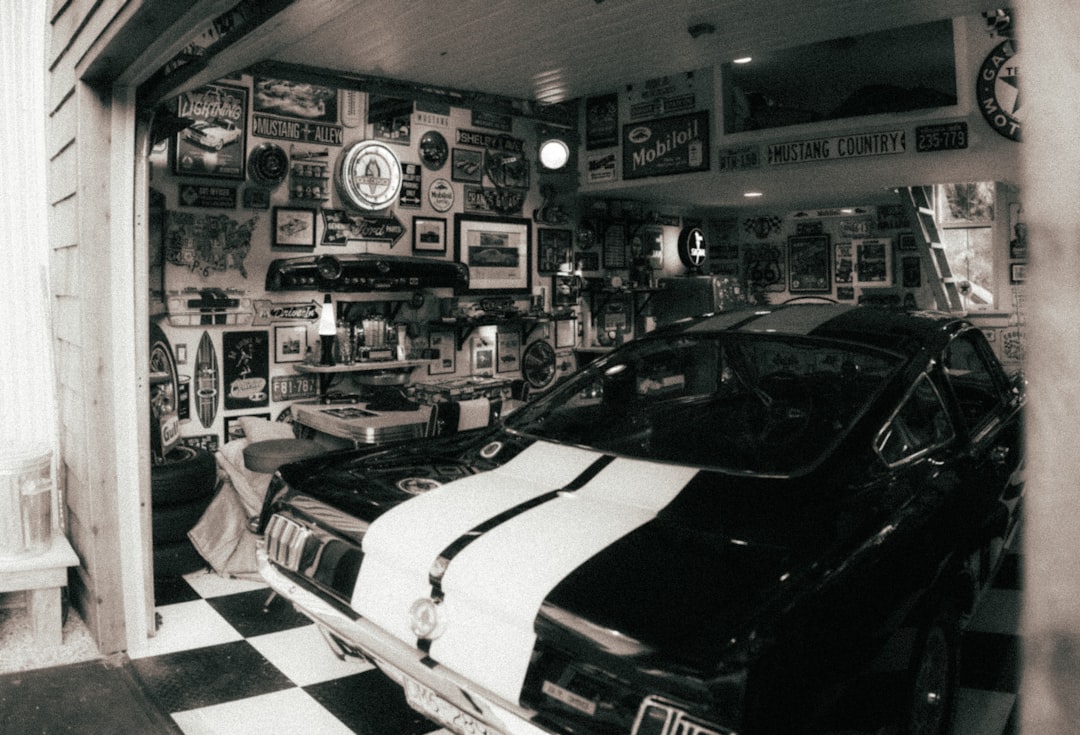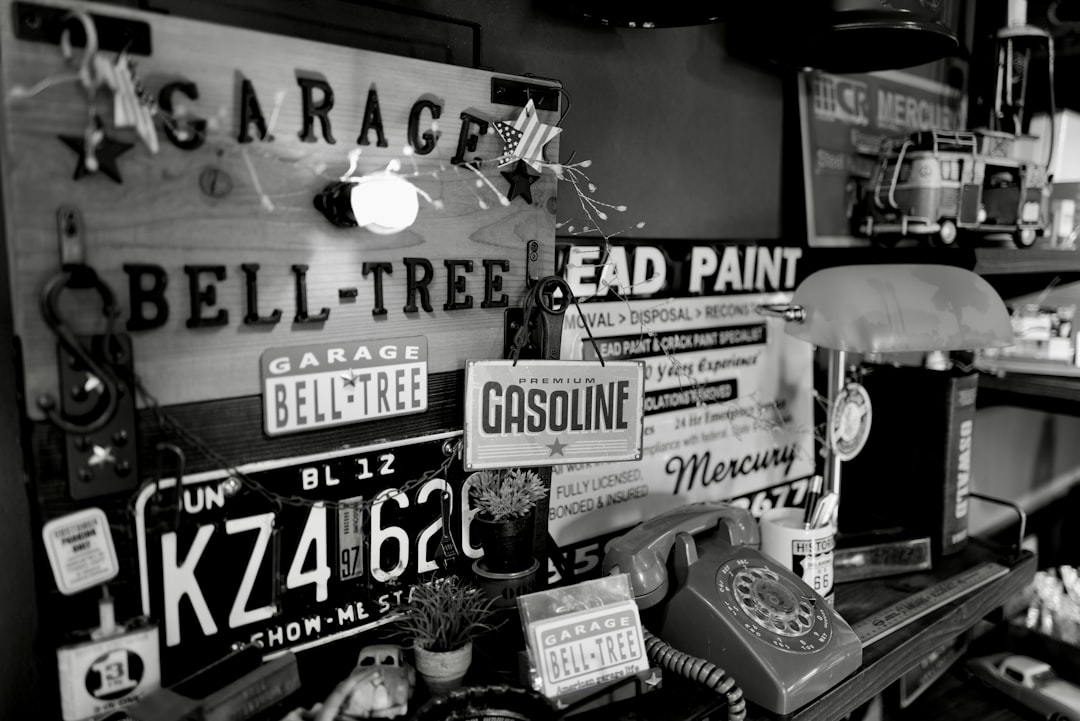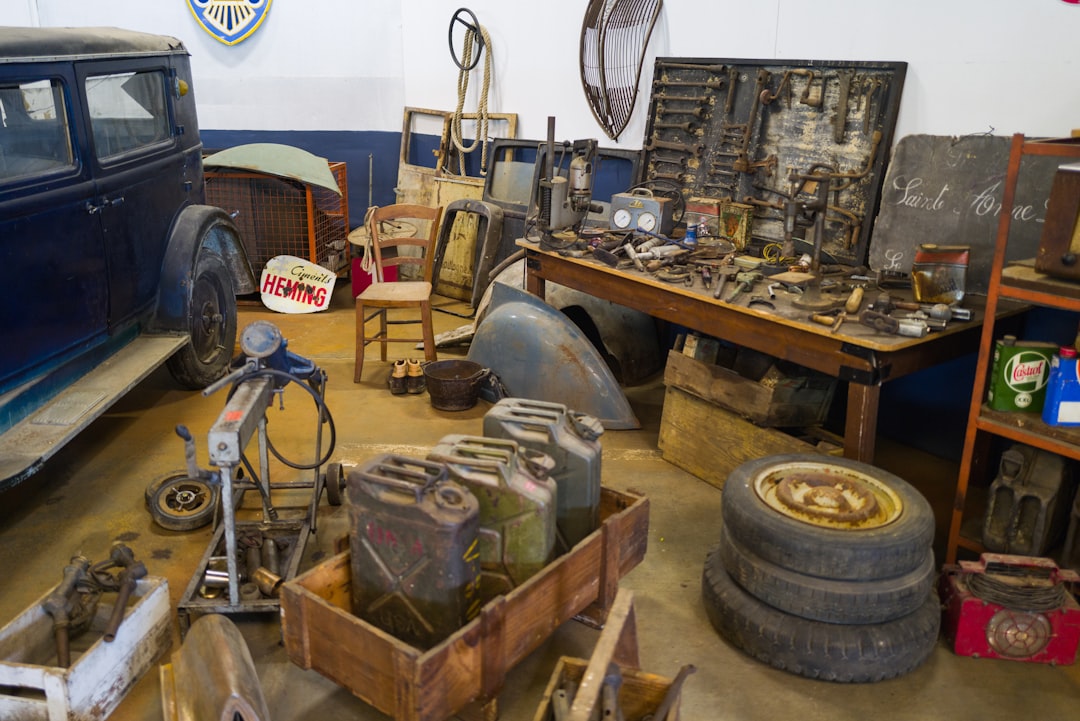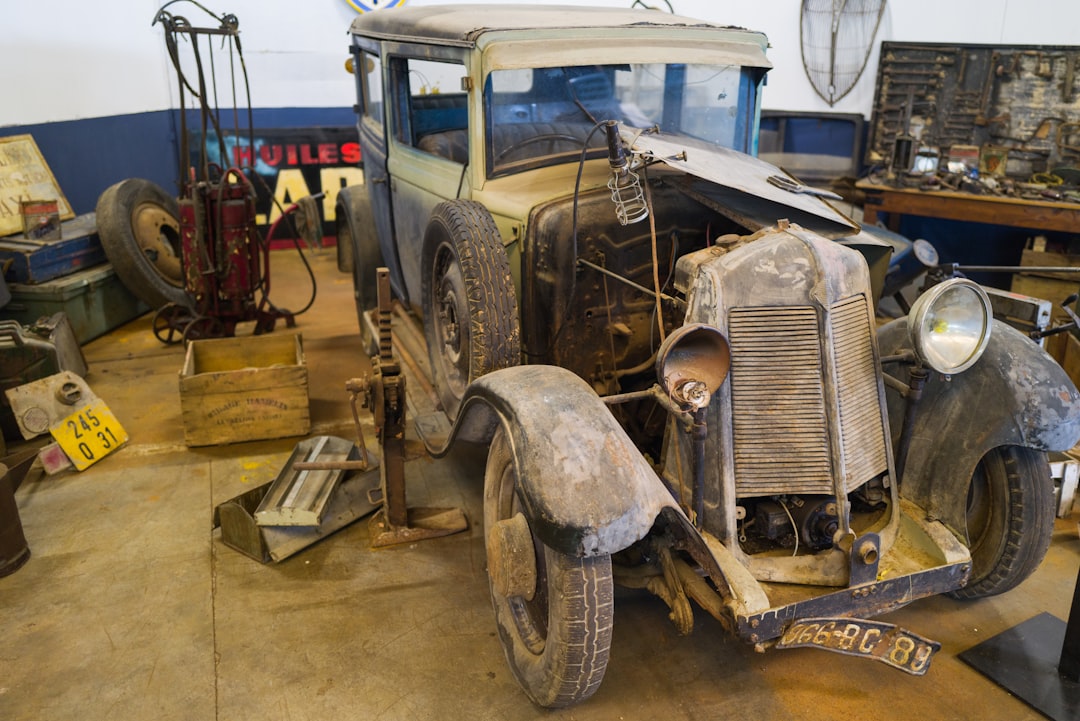

Engage prospects with a scan and streamline customer engagement with FREE QR code marketing tools by Sona – no strings attached!
Create a Free QR CodeFree consultation

No commitment

Engage prospects with a scan and streamline customer engagement with FREE QR code marketing tools by Sona – no strings attached!
Create a Free QR CodeFree consultation

No commitment
Vintage auto repair shops play a vital role in maintaining and restoring classic automobiles, preserving automotive heritage for future generations. The craft is time-intensive and trust-based, and the customer journey often starts offline at shows, club meets, or shop visits. Yet many promising interactions never make it into a CRM or lead list, which leads to missed follow-ups, lost quotes, and lower return on local marketing and event spend.
Clients in this niche value craftsmanship, exceptional service, and clear communication. Many shops still rely on analog workflows like paper forms, clipboards, and static flyers. These methods limit reach and make it hard to measure intent. Modern collectors expect fast and frictionless ways to connect: scans instead of URLs, mobile forms instead of clipboards, and instant content instead of email back-and-forth. Silent drop-offs occur when a prospect shows interest but never completes a form or remembers to call. To streamline capture with digital forms, consider Google Forms QR.
QR codes bridge this gap by turning every physical touchpoint into a digital entry point. A code on a brochure, reception counter, inspection report, or event banner can connect prospects to booking pages, quote forms, restoration guides, or parts requests. Each scan becomes a measurable signal of interest that feeds your CRM and marketing tools. With the right approach, QR codes help vintage auto repair shops streamline lead capture, surface buying signals sooner, and convert high-intent curiosity into scheduled consultations and long-term client relationships.

QR codes connect every physical touchpoint with a digital journey. They turn static brochures, signage, and appointment cards into lead capture and engagement tools that can be tracked and optimized. For a craft that thrives on credibility and relationship-building, this shift helps your team identify and nurture serious enthusiasts faster while reducing manual work.
Begin by mapping where interest already happens in your business. If your team invests in swap meets, auctions, or concours events, or hands out printed catalogs and care guides, those surfaces are perfect placements for codes that route to high-value actions. Replace analog processes like clipboards at check-in, untracked event flyers, and paper-only interest forms with QR-enabled flows. This keeps every prospect on your radar and reduces errors or delays in follow-up.
By adopting a data-driven approach, you connect code generation, scan tracking, and CRM sync into a single workflow. That keeps your pipeline full of qualified prospects and helps your team prioritize outreach. The result is fewer missed leads, more measurable campaigns, and a faster path from first interest to booked consult.

Vintage auto clients prize personalization, trust, and a seamless experience. Yet many shops struggle to see who is responding to print materials or event conversations, or when a casual visitor becomes ready to engage. QR codes matter because they make every physical moment actionable and measurable, and they fit naturally into the offline environments where classic car enthusiasts gather and make decisions.
Consider the simple shift from a paper brochure to a QR-enabled brochure. With a scan, your visitor lands on a dynamic landing page that features your restoration packages, lead form, and calendar link. They can request a quote, subscribe to rare parts alerts, or download a care guide in seconds. Your team receives a notification with details about the scan source and intent so the follow-up is timely and relevant.
Across appointment cards, bay signage, price sheets, and club brochures, QR codes give you a fast path from interest to action. Shops that replace manual sign-ups at auctions with QR-based lead capture often gather more complete, higher quality leads and reach out faster than competitors.

QR codes are adaptable, which means you can design the experience to fit the buyer journey. In a vintage auto context, that often means directing scanners to a mobile form, a gallery of past restorations, or a detailed diagnostic booking page. The key is to match the code type and destination to the moment of intent.
Static codes are best for fixed destinations like a PDF or a permanent landing page. Dynamic codes are better for campaigns where you need edits, analytics, and segmentation. With Sona QR you can manage both, update links after printing, and capture scan data in real time.
Dynamic QR codes are especially valuable in this niche because inventory changes, events come and go, and content such as restoration timelines benefits from updates. Use dynamic links for campaigns you want to measure and refine without reprinting your favorite show banner.

Growth hinges on intercepting potential clients wherever they engage with your brand. In vintage auto repair, many of those moments happen at shows, club meets, and local events where interest is high but follow-up is low. QR codes help you bring structure to that attention and transform it into measurable pipeline.
Start by listing all your offline materials and placements. Then attach a specific objective to each QR code. A club meet banner might drive consult bookings. A parts swap leaflet might capture sourcing requests. A reception counter display might encourage reviews. This approach helps you spot gaps and measure what works.
You can layer in more specialized placements too. Consider QR codes on inspection reports, printed estimates, or parts bags, each linking to a relevant next step. The more specific the destination, the higher the conversion to meaningful action.

QR codes are most effective when they enable a valuable next step for the customer. In a vintage auto context, that usually means a fast path to a consult, a detailed parts request, or content that proves your expertise. The following use cases align with common touchpoints across shows, mailers, and in-shop interactions.
Pair each use case with a dedicated landing page and a clear outcome metric, then test variations of the CTA. Over time, you will learn which combinations of placement, message, and offer draw the most qualified interest.
You can expand these use cases as your program matures. For example, use QR-enabled RSVPs for invite-only open houses, scan-to-subscribe for rare parts alerts, or scan-to-enter for show giveaways that build a new audience segment.
Every QR scan is a high-intent signal. It captures context about who scanned, where, and why. When you deploy unique codes across materials and moments, you create natural audience segments based on behavior. These segments power personalized follow-ups and efficient ad spend.
Start by defining your main audience categories: restoration prospects, parts seekers, routine maintenance clients, and past customers. Assign unique codes to placements that correlate with these intents. Then tag the resulting leads in your CRM and marketing tools, so retargeting and nurture flows match what each person actually wants.
Vintage-specific audience examples include concours attendees who scanned a gallery, club members who scanned a restoration guide, auction bidders who scanned a pricing sheet, and previous clients who scanned a loyalty offer. Treat each segment differently and your relevance, response rates, and ROI will rise.
Disconnected campaigns cause confusion and missed opportunities. QR codes act as connective tissue between print and digital, stitching together signals from shows, mailers, shop visits, and social content. When all roads lead to a trackable destination, you gain a unified view of performance and a cleaner funnel from awareness to booked work.
Begin by mapping each channel to a role. For instance, a direct mailer may drive initial interest, a show banner may secure a consult, and an in-shop display may prompt a review. Use unique QR codes for each channel and placement, then watch performance in one dashboard. With a platform like Sona QR, you can roll up results, test messaging, and swap destinations on the fly.
QR codes are the offline onramp to your digital engine. With centralized management, you can coordinate campaigns, compare placements, and sync scan data to your CRM and ad tools. That connected view gives you the confidence to scale what works.
Effective QR campaigns require clear goals, thoughtful design, and reliable measurement. Before you print anything, decide what success looks like and how you will track it. Then build a clean workflow from scan to conversion and ensure your team knows how to promote the code in the wild.
Use the checklist below to plan and launch campaigns that can be tested and improved over time. The steps scale from simple pilots to multi-channel programs and are designed to reduce wasted spend on untracked materials.
Clarify outcomes for your shop, such as converting show visitors into restoration consultations or collecting parts requests from a postcard. Define the audience, the desired action, and the follow-up path. If the goal is to book more diagnostic assessments, link the QR to a short form with time slots and auto-confirmation. If the goal is to build a content-driven nurture list, offer a downloadable care guide and tag contacts for educational emails.
Tie each use case to a measurable business metric. Track scan volume, form completion, appointment bookings, and downstream revenue. This keeps the focus on outcomes rather than vanity metrics.
Use dynamic QR codes for any campaign that needs tracking, segmentation, or post-print edits. Dynamic codes let you update destinations when an offer changes and view performance by placement, which is critical for optimizing events and print spend. Static codes fit fixed assets like a PDF or a permanent service menu that does not require analytics.
If you plan to retarget scanners or run A/B tests on landing pages, dynamic is non-negotiable. With Sona QR, you can create both types in minutes and keep them organized by campaign.
Match the QR’s visual style to your vintage brand. Add a clear frame, a logo, and a short benefit-driven CTA such as “Scan to book your classic consult” or “Scan for rare parts alerts.” Ensure color contrast and size are adequate for the viewing distance. As a rule of thumb, a code on a banner should be larger than one on a postcard.
Test scannability from multiple devices, angles, and lighting conditions. Print a proof and verify that the destination loads quickly and matches the promise on the physical piece. A beautiful flyer with a slow page is a conversion killer. To accelerate design, use a mechanic template or a shop business card that embeds a vCard QR.
Prioritize placements where enthusiasts already engage with your brand. This often includes event booths, shop counters, vehicle placards, restoration catalogs, club newsletters, and direct mailers. Use unique codes per placement so you can compare performance.
Coordinate timing across channels. For example, mail a postcard with a QR to RSVP for your open bay night, then place the same CTA code on posters at the local cars and coffee the week before. Consistency increases recall and response.
Monitor scans, form submissions, and bookings in your QR platform, then refine your creative and offers. Run A/B tests on CTAs, imagery, and landing page layouts. If a code gets views but few scans, adjust visibility and message. If scans are high but conversions are low, streamline the form and remove steps.
Feed insights into your CRM and marketing tools so follow-ups are timely and tailored. With Sona QR and Sona.com, you can unify scan data with website visits, ad clicks, and email engagement to attribute revenue across touchpoints.
A disciplined checklist turns QR from a novelty into a repeatable acquisition channel. The more you test, the clearer your top placements, messages, and incentives become.
Proving the ROI of print and events has historically been difficult for vintage auto repair shops. QR codes change that by connecting each scan to an action like a quote request, parts inquiry, review, or booking. With the right analytics setup, you can attribute revenue to the materials and moments that created it.
Start by instrumenting your destinations with UTM parameters and conversion tracking. Then unify scan data with CRM records so you can see which scans became consultations, which consultations became projects, and how long the buying cycle takes by channel. Over a few campaigns, patterns will emerge that inform where to reinvest. For measuring results from physical touchpoints, explore offline attribution.
With Sona QR, you can track scan performance in one dashboard. Sona.com extends that visibility by linking scans to website behavior, ad interactions, and CRM milestones through identity resolution and multi-touch attribution. The result is a closed-loop view that turns real-world engagement into actionable insights you can use to grow with confidence.
QR codes deliver results when they are easy to find, clearly explained, and connected to a valuable outcome. As your program scales, standardize how you deploy and measure codes so the team knows what to expect and how to improve. Train staff to reference the codes at key moments and reinforce the benefits to the client.
Focus on placements and messages that match your most common journeys. Diagnostic bookings, restoration consults, and parts sourcing requests cover the bulk of vintage shop demand. Design QR destinations specifically for these actions, keep forms short, and follow up fast.
Creative deployments specific to vintage auto shops include a windshield cling with “Scan for your post-show inspection discount,” QR on parts bags linking to torque specs or care tips, and QR on inspection reports that routes to a booking page for recommended follow-up work. These small touches turn routine interactions into relationship builders.
Vintage auto repair shops are uniquely positioned to blend heritage craftsmanship with modern digital engagement. QR codes help you capture the attention you already earn at shows, in the shop, and through word-of-mouth, then convert it into measurable action. By pairing smart placements with clear CTAs and robust analytics, you reduce missed opportunities, speed up follow-up, and improve the client experience.
The path forward is practical and proven. Start with one or two high-impact use cases such as restoration consult bookings and parts sourcing requests. Deploy dynamic QR codes, measure what happens, and refine the destination and message. As you learn what resonates with collectors and enthusiasts in your market, expand into reviews, loyalty offers, and content downloads that reinforce your expertise.
Sona QR gives you the tools to create, manage, and track QR codes across every touchpoint. Sona.com connects those scans to website visits, ads, email, and CRM activity so you can see how QR contributes to pipeline and revenue. With a disciplined approach, every scan becomes a signal you can act on, and every physical asset becomes a digital entry point to a relationship that spans years of care and restoration. Start creating QR codes for free.
QR codes have revolutionized vintage auto repair shops by transforming traditional customer interactions into powerful lead-capturing opportunities. Whether it’s attracting new classic car enthusiasts, enhancing in-shop experiences, or collecting valuable customer insights, QR codes turn every touchpoint—like signage, business cards, or repair estimates—into a seamless, trackable gateway to growth. Imagine instantly knowing which marketing materials bring in the most loyal clients and being able to act on that data in real time.
With Sona QR, vintage auto shops can create dynamic, trackable QR codes that update instantly without costly reprints, connect every scan to tangible revenue, and deliver actionable analytics to refine campaigns. No more guesswork—just smarter lead capture and stronger customer relationships. Start for free with Sona QR today and drive your vintage auto repair business forward with every scan.
Vintage auto repair shops offer maintenance, restoration, diagnostic bookings, parts sourcing, restoration consults, and provide vintage car care resources.
You can find reputable vintage auto repair shops by attending car shows, club meets, and local events where these shops often engage with enthusiasts and by looking for shops that use modern tools like QR codes to streamline customer communication and service.
Best practices include following expert guides provided by shops, scheduling regular diagnostic assessments, requesting rare parts through specialized sourcing, and using restoration resources offered by vintage auto repair shops.
They use QR codes on brochures, event signage, and print materials to connect offline interactions to digital forms, booking pages, and content, enabling fast lead capture, measurable engagement, and streamlined follow-up.
Costs vary, but vintage auto repair shops provide quote requests via mobile forms accessed through QR codes that collect vehicle details and restoration goals to offer tailored estimates.
QR codes turn physical touchpoints into measurable digital entry points that help capture leads, reduce missed follow-ups, enable fast customer engagement, and provide valuable analytics to optimize marketing efforts.
They use static QR codes for fixed content like PDFs and dynamic QR codes for campaigns requiring updates, tracking, and segmentation, linking to landing pages, forms, vCards, SMS, Wi-Fi access, app downloads, and more.
Effective placements include event banners, brochures, reception counters, service receipts, inspection reports, parts bags, in-shop signage, direct mail, and local billboards near enthusiast routes.
They track scan volume, form completions, bookings, and revenue through QR platforms integrated with CRM and marketing tools, using UTM parameters and multi-touch attribution to measure ROI by placement and campaign.
Use unique QR codes per asset and location, add UTM parameters, automate follow-ups through CRM workflows, educate staff to promote scans, and design QR destinations for common actions like diagnostic bookings and parts requests.
Use Sona QR's trackable codes to improve customer acquisition and engagement today.
Create Your FREE Trackable QR Code in SecondsJoin results-focused teams combining Sona Platform automation with advanced Google Ads strategies to scale lead generation

Connect your existing CRM

Free Account Enrichment

No setup fees
No commitment required

Free consultation

Get a custom Google Ads roadmap for your business






Launch campaigns that generate qualified leads in 30 days or less.
